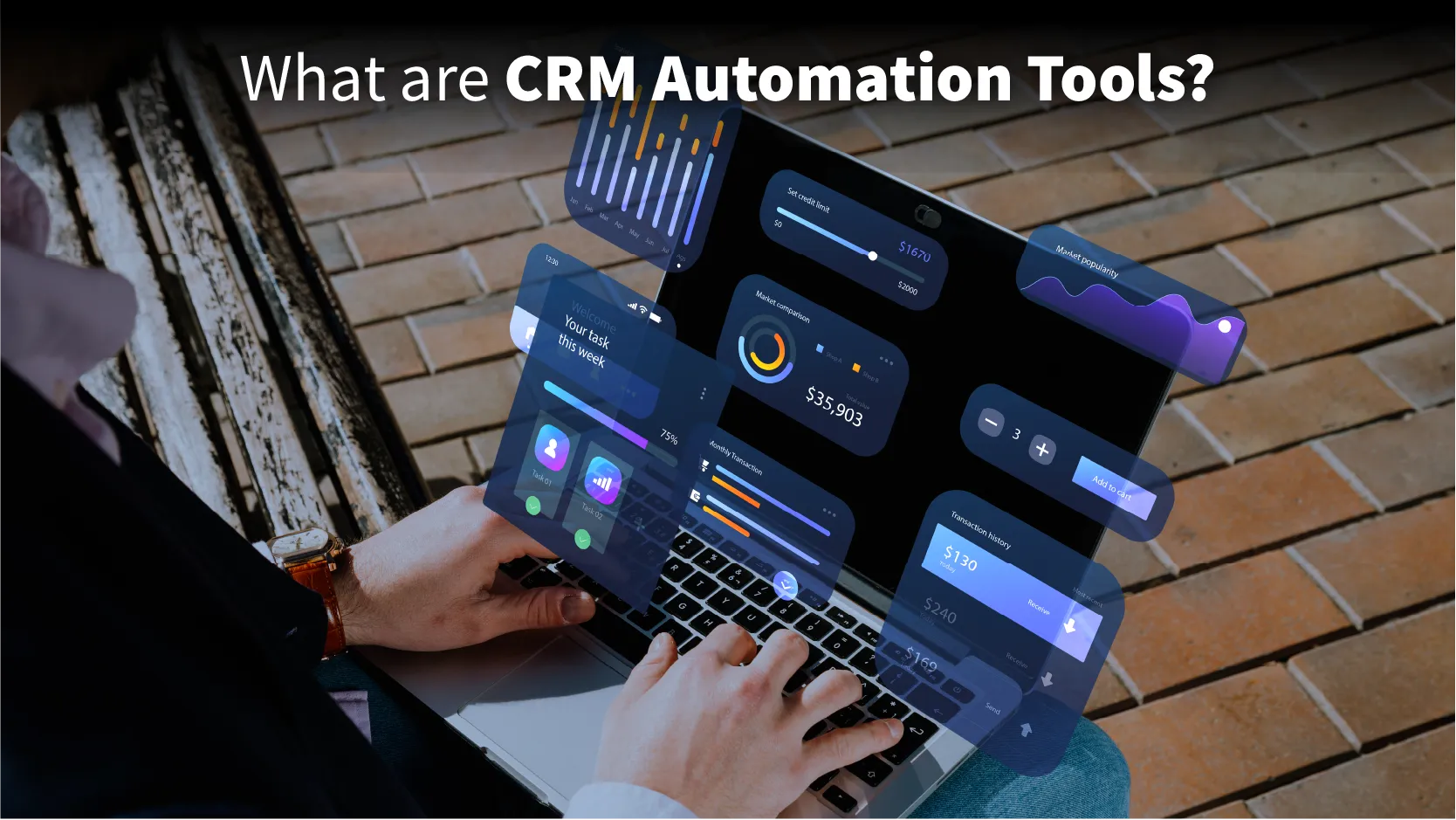B2B and B2C companies are making the most out of integrating CRM automation tools in their MarTech Stack. Most enterprises have a customer relationship management (CRM) system implemented to streamline their complex business processes. CRM tools help organizations in the following ways:
- Structure customer data
- Align presales, sales, and aftersales teams to deliver an enhanced customer experience (CX)
- Offer actionable insights to make informed decisions
CRM software is an effective tool that enables organizations to execute various repetitive and monotonous tasks. Integrating automation tools with the CRM can help eliminate repetitive and monotonous tasks. There are various customer relationship management software that have automation tools inherently integrated with the system.
In this blog, let us have a look at CRM automation tools, their benefits, and best practices.
What are CRM Automation Tools?

Salesforce, HubSpot, LeadSquared, Brevo, and Drip are a few examples of cloud-based CRM automation tools that B2B businesses can consider integrating into their MarTech stack.
What Are The Top Benefits of CRM Automation Tools?
Here are a few advantages of adopting automation tools to manage customer relationships:
1. Optimize Productivity
The capabilities of CRM automation tools to streamline multiple marketing, sales, and after-sales operations offer various benefits to the organization. CMOs can design automated work processes that can enable teams to execute repetitive, tedious, and monotonous tasks with a single click. This strategy helps team members save a substantial amount of time, which they can use to generate high-quality leads, nurture client relationships, and have a higher conversion rate.
2. Enhance Pipeline Output
Using automation tools, customer-facing teams can follow up with clients in real time. Presales teams can generate high-quality marketing-qualified leads (MQLs) and sales-qualified leads (SQLs) that have a higher conversion rate. According to a report by Software Path, there is a 451% increase in qualified leads if marketing automation software is used.
3. Short Sales Cycle
Another significant benefit of integrating CRM automation tools is that it enables teams to make the most out of the CRM data. These automation tools can automate customer research, draft quotes, and contracts, resulting in a shorter sales cycle. As the teams have access to customer data at their fingertips, it becomes easier to score high-quality leads. Decision makers can assign high-value leads to the best sales reps in a team to ensure conversion.
4. Make Informed Decisions
CRM systems allow the team to extract valuable customer data from multiple marketing campaigns to have useful insights. The tool structures the customer data to help decision-makers make data-driven decisions on complex tasks.
5. Engage Customer Effectively
Higher data accuracy helps teams to have personalized customer interactions based on their preferences. Engaging clients effectively is a perfect way to nurture and build long-lasting relationships.
6. Enhance Customer Experience
Integrating CRM automation tools into the MarTech stack allows customers to use chatbots implemented to avail information on demand or get their issues resolved. These customer service chatbots can detect customer issues to address them in real time with the appropriate action. If the query or issue is beyond the capabilities of the chatbot, it will assign the query to the concerned department to get the issue resolved for the customer.
Also Read: Social CRM: A Comprehensive Guide to Boosting Customer Relationships
What are the Best Practices for Integrating CRM Automation Tools in the MarTech Stack?
A. Integrate a Client-Oriented Tool
Integrating the right tools plays a crucial role in achieving the expected results. Decision-makers can look for a user-friendly tool with an engaging user interface (UI) that responds to search queries faster and offers a comprehensive view of customer data.
B. Choose an Advanced User-Friendly Software
Enterprises can enhance the efficiency and productivity of the customer-facing teams by selecting an automation tool that fits their workflows. Various teams like marketing, sales, and customer support leverage CRM automation tools to execute multiple tasks. Hence, it is essential to select a user-friendly tool to boost adoption rates. The system should serve as a single source of information for seamless data integration and increased tool utilization.
C. Implement a Mobile-Friendly CRM
Many businesses today have their teams and data dispersed across various locations and servers, respectively. Teams need to have access to customer data on the go to engage with clients and resolve their queries. Selecting the right cloud-based CRM solution that is mobile-friendly is essential for accessing customer data in real-time and executing the operations from anywhere.
D. Monitor Omni-channel Marketing Data
A client goes through various stages during their customer journey, right from being a contact card in the system to becoming a high-value prospect. It is essential to capture all the customer interaction data at various stages of their customer journey for analysis. When selecting CRM automation tools, business decision-makers need to ensure that the tool seamlessly integrates with other marketing tools. These automation tools should connect with other tools that monitor landing page visits, open rates, click-through rates, and form submissions to offer a holistic view of the customer journey. Customers use multiple channels to engage and interact with the brand. The CRM automation tools should monitor and store customer interactions across all channels automatically.
E. Draft CRM Automation Workflows
Updating the customer relationship management data in different formats can damage the data integrity. Organizations need to maintain uniformity in the way they create and update the data in the system. Business leaders should consider setting precise guidelines to feed the data manually or while importing the data. The focus should be on keeping the data clean for a longer period. Setting automation workflows can help standardize the processes across the organization.
F. Integrate Tailored Automation Features
CMOs can personalize the CRM platforms to ensure the automation adapts to the unique sales processes. Enterprises can develop a reliable customer relationship by welcoming new customers with an automatic welcome campaign. They can nurture the relationship by sending follow-up reminders that help engage the customer at regular intervals.
G. Empower Customer-Facing Teams With Adequate Training
Compared to traditional CRMs, the user adoption of advanced CRM automation tools will be much higher. In order to achieve higher ROI on implementation, it is crucial to train the marketing, sales, and after-sales teams on how to efficiently use the tools. It is also essential to train the teams on how to make the most out of the customer and prospect data available. There are a few vendors that offer training programs on using CRM automation tools for higher adoption rates.
H. Conduct Post Implementation Evaluation and Make Strategic Changes
After integrating the CRM automation systems, businesses need to conduct a post-implementation evaluation to determine their success. Based on the data collected, there should be necessary data-driven changes done to improve the ROI and enhance the customer experience.
Wrapping It Up
Embracing CRM automation tools in the MarTech Stack helps eliminate tedious, repetitive, and labor-intensive tasks. These tools efficiently streamline the workflows of all customer-facing teams, including presales, sales, and marketing. Business leaders should consider embracing CRM automation to facilitate frictionless interactions between different marketing and sales teams.

